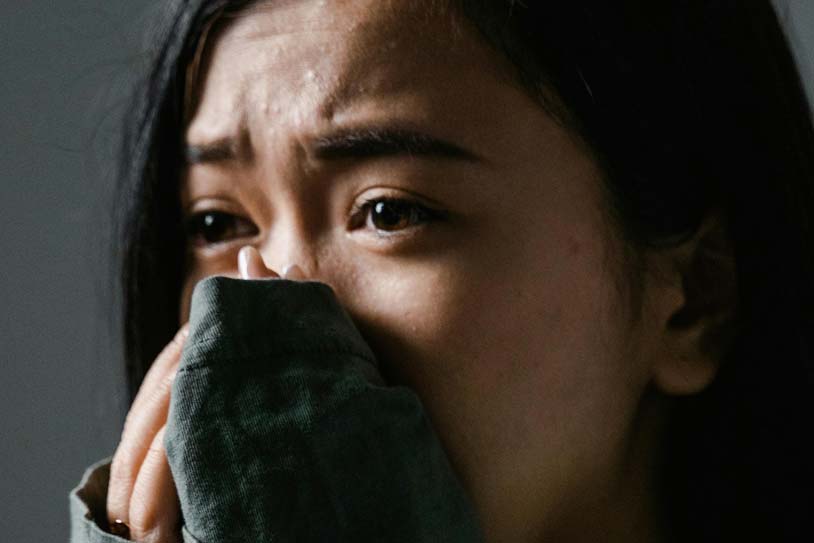
Trauma can leave deep emotional scars that don’t fade easily. When you go through a traumatic event, the fear, stress, and painful memories can stay with you long after the event is over. For some people, this emotional and mental strain turns into Post-Traumatic Stress Disorder (PTSD).
PTSD is a mental health condition that can affect how you feel, think, and behave. It can cause flashbacks, anxiety, and a constant sense of unease. Living with PTSD can make it hard to enjoy life, maintain relationships, and feel like yourself.
If you’re struggling with PTSD, you’re not alone. About 5% of the U.S. population experiences PTSD every year. The good news is that there are effective treatments and coping strategies to help you heal and regain control of your life.
What is PTSD?
PTSD stands for Post-Traumatic Stress Disorder. It develops when someone experiences or witnesses a traumatic event that causes intense fear, helplessness, or horror.
Common Causes of PTSD:
PTSD can happen after any type of trauma, including:
- Abuse – Physical, emotional, or sexual abuse.
- Car Accidents – Serious accidents can trigger ongoing fear and anxiety.
- Sexual Assault – Survivors of sexual violence often struggle with long-term emotional distress.
- Natural Disasters – Events like hurricanes, earthquakes, and floods can leave lasting emotional damage.
- Combat Experience – Veterans often face PTSD due to the intense stress of war and combat.
- Other Serious Events – Robberies, assaults, or witnessing violence can also lead to PTSD.
It’s completely normal to feel upset, scared, or shaken after a traumatic event. But when those feelings don’t go away and start affecting your daily life, it may be a sign of PTSD.
Why PTSD Happens
When you experience trauma, your brain processes it differently than regular memories. Your brain’s response to trauma involves three key areas:
- Amygdala – Controls fear and emotional responses. Trauma causes the amygdala to stay on high alert, making you feel constantly unsafe.
- Hippocampus – Organizes and stores memories. With PTSD, the hippocampus struggles to file the traumatic memory correctly, causing flashbacks and intrusive thoughts.
- Prefrontal Cortex – Helps you process information and make decisions. PTSD weakens the prefrontal cortex, making it harder to calm yourself and feel in control.
Instead of processing trauma as a past event, your brain treats it like it’s still happening. This creates a cycle of fear and stress that can make it hard to heal without help.
Symptoms of PTSD
PTSD symptoms can vary from person to person, but they usually fall into four main categories:
1. Re-experiencing the Trauma
- Flashbacks where you feel like the event is happening again.
- Nightmares and disturbing dreams about the trauma.
- Strong emotional and physical reactions to reminders of the trauma (increased heart rate, sweating, panic).
2. Avoidance
- Avoiding places, people, or activities that remind you of the trauma.
- Isolating yourself from others to avoid feeling triggered.
- Numbing your emotions to protect yourself from pain.
3. Negative Thoughts and Feelings
- Feeling hopeless or worthless.
- Difficulty trusting others.
- Losing interest in activities you once enjoyed.
- Feeling detached or disconnected from the world around you.
4. Hyperarousal and Reactivity
- Feeling constantly on edge or alert.
- Trouble sleeping or relaxing.
- Being easily startled by loud noises or sudden movements.
- Angry outbursts or irritability.
5. Physical Symptoms
- Increased heart rate and muscle tension.
- Sweating or trembling.
- Digestive issues and headaches.
- Chronic fatigue or sleep disturbances.
How PTSD Affects Daily Life
Living with PTSD can be exhausting. It may interfere with work, school, relationships, and personal health. You might find it hard to stay focused, control your emotions, or trust people. Some people with PTSD develop depression, substance abuse issues, or suicidal thoughts.
PTSD can also weaken your immune system and increase the risk of heart disease and other physical health issues. That’s why getting proper treatment is essential.

How to Heal from PTSD
Recovering from PTSD takes time, but it’s possible with the right support and treatment. Healing involves processing the trauma, managing symptoms, and rebuilding trust in yourself and others.
1. Trauma-Informed Care
Trauma-informed care means working with mental health professionals who understand how trauma affects you. Instead of just treating the symptoms, they focus on helping you feel safe and empowered.
A trauma-informed approach includes:
- Building trust with your therapist.
- Giving you control over your treatment plan.
- Creating a safe and supportive environment.
2. Therapy Options
Therapy is one of the most effective treatments for PTSD. It helps you process trauma, manage symptoms, and develop healthier coping strategies.
Types of Therapy:
- Cognitive Behavioral Therapy (CBT): Helps you identify negative thoughts and replace them with more positive ones.
- Exposure Therapy: Helps you face and process traumatic memories in a safe setting to reduce their emotional power.
- Eye Movement Desensitization and Reprocessing (EMDR): Uses guided eye movements to help your brain process and store trauma differently.
3. Medication
Sometimes, medication is needed to help control symptoms. Doctors may prescribe:
- Antidepressants – To improve mood and reduce anxiety.
- Anti-Anxiety Medications – To help with panic and worry.
- Prazosin – To reduce nightmares and improve sleep.
Medication works best when combined with therapy. Talk to your doctor about the right option for you.
4. Transcranial Magnetic Stimulation (TMS)
TMS uses magnetic fields to stimulate parts of the brain involved in mood and emotional regulation. Stenzel Clinical does not recommend TMS as it’s not FDA-approved specifically for PTSD, but some people find it helpful for managing symptoms like depression and anxiety.
5. Join a Support Group
Talking to others who understand what you’re going through can be comforting. Support groups provide a space to:
- Share your story without judgment.
- Learn coping strategies from others.
- Build a sense of community and belonging.
6. Lifestyle Changes
Simple lifestyle changes can support your healing journey:
- Exercise – Regular physical activity helps reduce stress and improve mood.
- Healthy Diet – Eating balanced meals supports brain and body health.
- Sleep Routine – Going to bed and waking up at the same time helps regulate mood and energy levels.
- Mindfulness and Relaxation – Yoga, meditation, and deep breathing can help calm your mind and body.
7. Avoid Alcohol and Drugs
Many people with PTSD turn to alcohol or drugs to cope. While this may provide short-term relief, it often makes symptoms worse over time. Healthy coping strategies, like therapy and exercise, are more effective in the long run
Finding the Right Treatment for You
Healing from PTSD is not a one-size-fits-all process. What works for one person might not work for another. That’s why it’s essential to work with a mental health professional to create a personalized treatment plan.
Breaking the Stigma Around PTSD
Unfortunately, there’s still a lot of stigma around mental health issues like PTSD. Some people feel ashamed or weak for seeking help — but PTSD is not a sign of weakness. It’s a normal response to trauma, and healing takes strength.
When you seek help, you’re taking control of your health and future. Everyone deserves to feel safe, supported, and understood.
Final Thoughts: Take the First Step Toward Healing
Recovering from PTSD is possible — but you don’t have to do it alone. With the right therapy, support, and coping strategies, you can regain control of your life. Reach out to a mental health professional today and take the first step toward healing.
Remember, you are stronger than your trauma — and you deserve to feel whole again.
“Unfortunately, there’s still a lot of stigma around mental health issues like PTSD. Some people feel ashamed or weak for seeking help — but PTSD is not a sign of weakness. It’s a normal response to trauma, and healing takes strength.
Stenzel Clinical Services
Recent Posts
Overcoming Limiting Beliefs
I found that much of our suffering originates from an invisible source: limiting beliefs. These are deeply held assumptions about [...]
Fueling Optimism
Can you feel it? Just picturing a positive future moment say, an exciting vacation or an anticipated event can instantly [...]
7 Evidence-Based Steps to Manage Panic Attacks at Home
A panic attack can feel terrifying: your heart races, your breathing speeds up, your hands tremble, and your brain [...]



